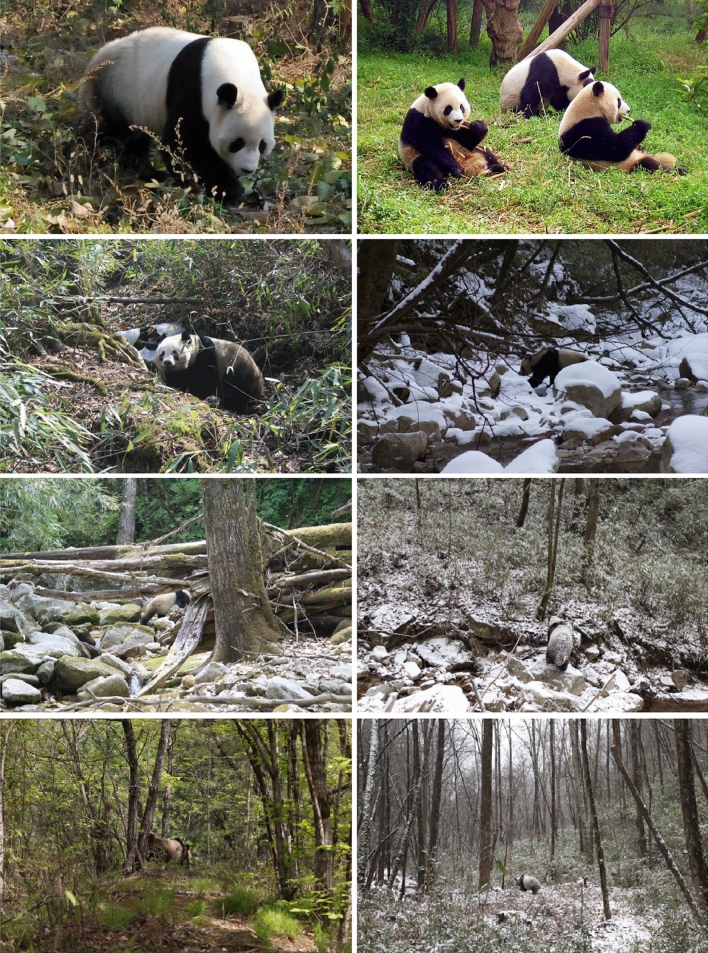Figure 1.
Giant panda coloration and its visual background. First row: animals photographed in a zoo (left Beijing zoo, right Chengdu zoo, Wikimedia commons, the rest in nature by FW), exemplifying how black-and-white coloration stands out when viewed close up and/or against an artificial background. Second row: In its natural habitat, the coloration is less conspicuous even at close range. Third row: the camouflage is more evident at intermediate distances and from various angles, and helps the giant panda to blend into its natural environment. Bottom row: from further away, the black-and-white coloration breaks up the outline of the animal due to increased edge disruption. Note that these figures are meant illustrative—the images are not normalised data.

